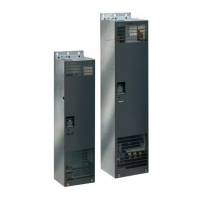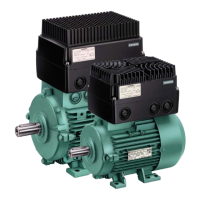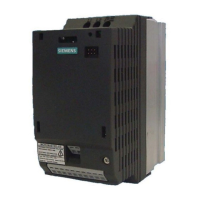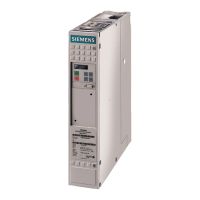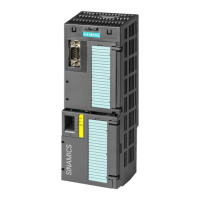&20081,&$7,216 ,QWHUQDWLRQDO(QJOLVK
MICROMASTER 420 Reference Manual
60 Issue A1
3.4
PROFIBUS
3.4.1 Overview
PROFIBUS is an open standard communication protocol which has been designed
and developed for use in general industrial applications. The standard is defined in
EN50170 (volume 2) and has been developed, agreed and adopted by many
manufacturers world-wide.
PROFIBUS control is now available for a wide variety of products, from many
different companies manufacturing drives, actuators, valves, as well as
Programmable Logic Controllers (PLCs) and other system controllers. PROFIBUS
operates over a variety of hardware interconnections such as fibre optics and
RS485.
There are three versions of PROFIBUS: FMS, DP and PA and all these versions
will work together. The most commonly used version is the DP version, intended
for general industrial applications. This is the version supported by Siemens
Drives.
3.4.2 Using the PROFIBUS
In order to connect to a PROFIBUS system, a PROFIBUS module is required. This
module mounts on the front of the drive and uses the RS485 serial port to
communicate with the drive.
A nine way ‘D type’ connector, which is a PROFIBUS standard, is incorporated
into the bottom of the module.
The drive may be controlled and monitored via the main PROFIBUS system in a
similar way to the USS. The PROFIBUS protocol is more complex than the USS
protocol and control programmes are best developed using proprietary software.
Although a PROFIBUS system is more complex than for instance, the USS
Protocol, it offers the following advantages:
• Open, clearly defined system.
• Many different products from many different manufacturers.
• Well proven in many industrial applications.
• Reduced wiring; easy set up re-programming, monitor and control.
• Very fast; up to 12Mbaud.
• Up to 125 slaves on one DP system.
• Single or Multi-master operation possible.
• One to one or broadcast communications.
• Support and development software available.
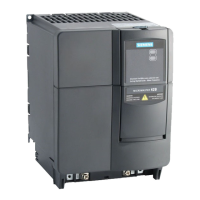
